'Good over evil'
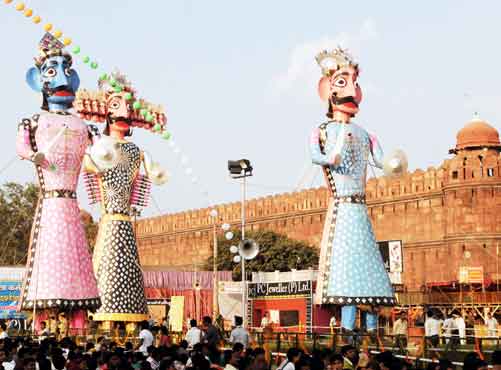
Dussera is one of the major Hindu festivals and it is celebrated with great zeal and enthusiasm across the country. India being a culturally diverse country, here people also decipher the meaning behind every festival in a different way, which adds to the diversity of our nation. The festival Dussera is celebrated with different interpretations, while the north celebrates the victory of Lord Rama over the evil King Ravana, whereas the east and south celebrate Goddess Durga’s victory over Demon Mahishasur.
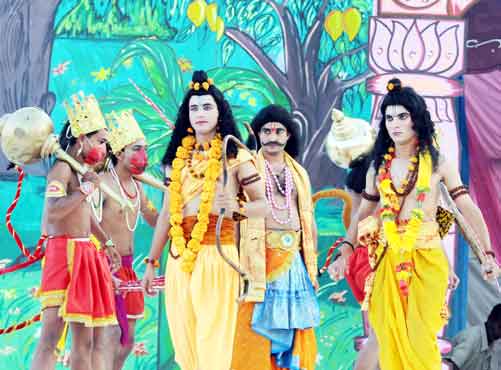
North India: They follow the mythological accounts of Lord Rama’s victory over the evil King Raavana. As celebrated in the other parts of the country, it is a ten-day festival where on the tenth day huge figurines of Raavana are burnt. It is considered as the ten day period was the supposed period of fight between the Lord and evil. It is famously referred as Ram-Leela in the north. In Uttar Pradesh, They start the festivities by planting some barley seeds in the ground and on the ninth day if they sight sprouts on the plant then it is considered as lucky.
The same tradition is followed in others states like Haryana, Punjab, Uttrakhand and Kashmir. In Madhya Pradesh, they perform Ram-Leela on the tenth day and it is ended on a note that good prevails over evil when someone disguised as Lord Rama burns the Raavana idol with fire arrow. In Himachal Pradesh, they believe that in the 17th century their King placed the Raghunath idol on this day and hence from that day onwards they are celebrating Dussera with Kullu Valley beautifully adorned for the festival.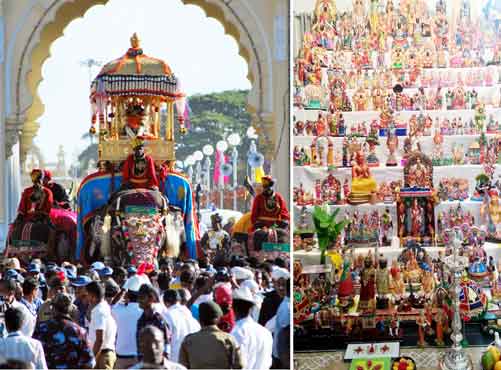
South India: It is popularly called as Vijaya Dashmi, were women take center stage. South Indians are far more understated when celebrating their festivals, but dussera is considered as one of the most important festivals. Here too it is celebrated for ten days where the tenth day is called as VIjaya Dasami. Another unique trait of south is the display of different dolls in households which narrate different stories and representations. The festival is also referred as Kolu.
In Andhra Pradesh, Vijayawada is the center for the grand festivities as it is believd that after defeating and killing Mahishasura, Goddess Durga came to this hill and settled. While as in Telangana, Bathukamma, the state festival is celebrated for ten days as it is believed that after a fierce fight with Mahishasura, Goddess Durga went into a deep sleep due to fatigue and after ten days of prayers and dedicating she wakes up on the Dasami day.
In Karnataka, Mysore is the place to visit during Dussera festivities as the city is decorated elegantly for the ten days festivities which begin from the Mysore Palace. They celebrate it as ‘Naddahabba’. During these ten days, elephants are decorated and many different traditional dance forms are performed on streets. In Tamil Nadu and Kerala, they have a display of dolls exhibition known as Kolu. On the 9th day they perform saraswathi pooja and end it on the happy note of celebrating Vijayadashami as the occasion of the death of Mahishasura.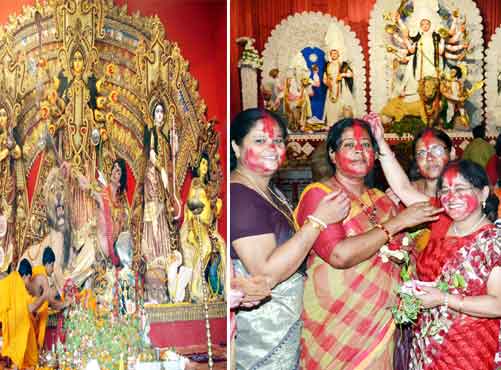
East India: The famous Bengali Durga Pooja is known worldwide, as it is the most important period in the East Indian’s Hindu calendars. It is known as the Durga Pooja and celebrated as the triumph of goddess Durga over demon and also is a joint magnificent celebration of feminism. During this time of the year, Durga idols mark the streets and homes of every East-Indian. A visit to West Bengal during this time will only gratify a tourist of the grand celebration conducted here. The exclusive Durga Pandals and Pooja’s are just not enough to describe the festival in the East.
North East: In Tripura, the festival was introduced by the erstwhile King of Tripura Krishna Kishore Manikya Bahadur in early 19th century, continues to be the major attraction for the people of the State. The presiding Goddess has two arms at the Durgabari temple where the 200-year-old pooja is organised and funded by the State's government. In Kohima, huge pandals for goddess Durga are erected where throngs of devotes visit to offer their prayers.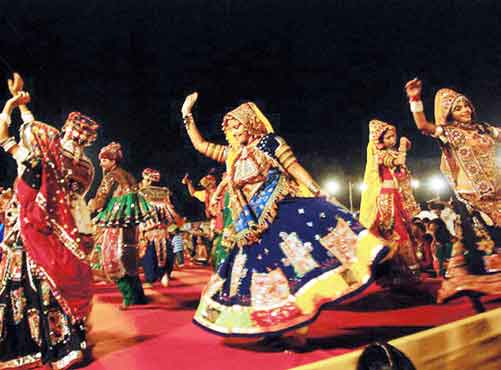
West India: The ten days of the festival in the west mean dance and music. The nine days of Navratri and the tenth day of Dussera are celebrated by dances called Garba and Dandiya, which are performed by worshippers with two sticks. There are also many fairs and circuses full of rides and other fun activities especially in the urban parts of Western India.
For an outsider it may seem like the country is divided in different ways to celebrate one festival which is interpreted in different ways but has one meaning. Be it north, south, east or west, every Hindu in the country is only celebrating the triumph of good over evil in their interpreted ways and making it special in a unique way. And, this is how one can describe our country with prides its ‘Unity in Diversity’.
-L Pavani Kodati
-
Related News
-
More from Metro India

